We like to refer to a lot of motorcycle gear as “life-saving,” but in the case of helmets, it’s literally true. In fact, it’s estimated that helmets saved some 1,870 lives in 2017.
They lower the risk of head injury by 69% and the risk of death by 42%.
With this in mind, not to mention the many state laws requiring them, it seems that getting a good motorcycle helmet is a no-brainer. But which type is best for you?
The 6 Main Motorcycle Helmet Types
Full Face
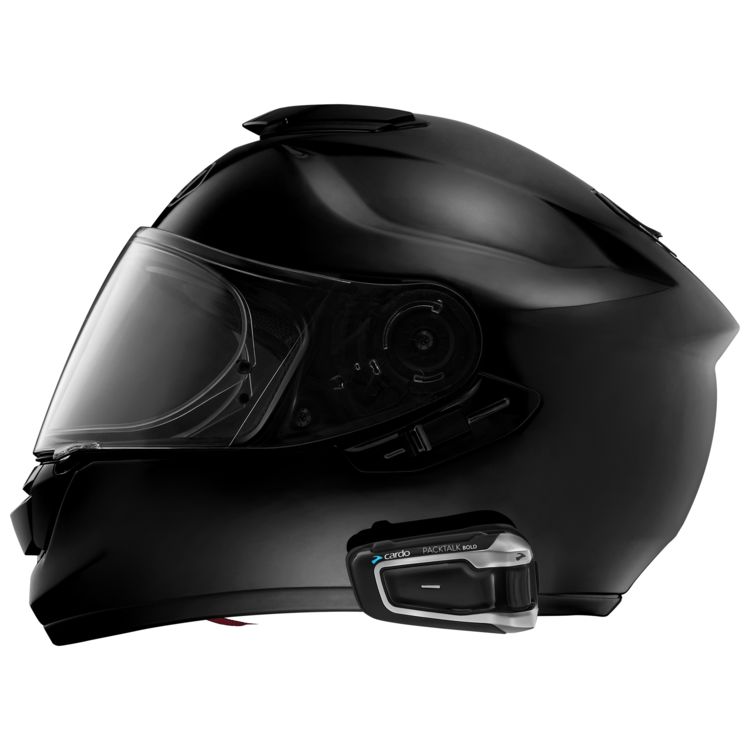
Full-face helmets are those that cover the entire head and include an eye shield or visor that protects the face.
Because full-face helmets cover your whole head, they provide the most protection of all types. Most importantly, the hard shell of the helmet wraps around the face and over the chin. The chin is what usually hits first in an accident, so a full-face helmet can save your handsome jawline.
The biggest complaint with these helmets is that they can feel suffocating and uncomfortable. Luckily, modern models usually include ventilation, not to mention other advanced features like Bluetooth speakers.
Read more about our picks for:
Pros:
- Protects the entire head including chin
- Room for features like headsets and speakers
- Built-in visor
Cons:
- Can feel suffocating
- More material adds to price
- Can’t eat, drink or talk with helmet on
Open Face
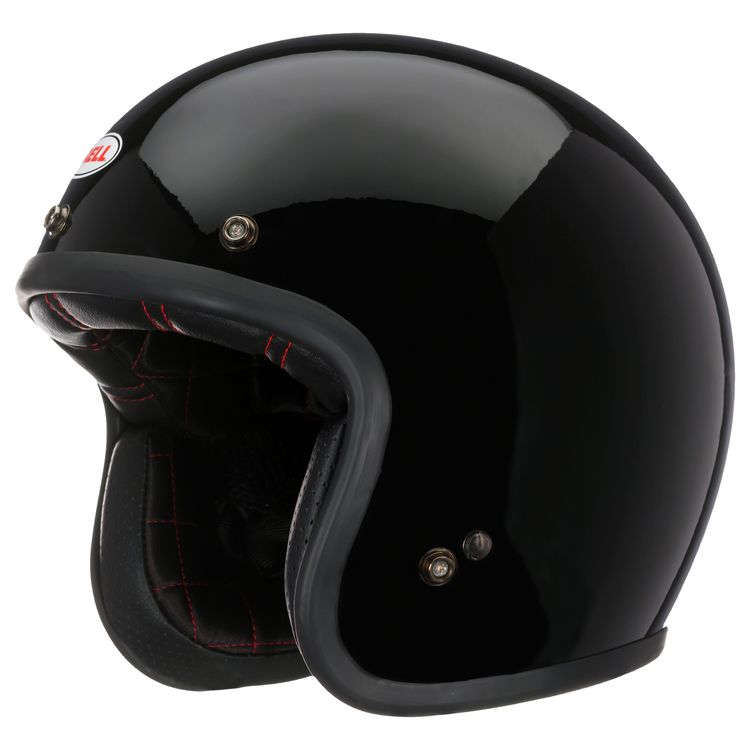
Sometimes called three-quarter helmets, these models resemble full-face helmets but lack the chin bar. In other words, they still have a liftable eye shield and protection for your big brain but less so for your pretty face.
Cruisers pair well with open-face helmets because you still get that wind-on-your-skin feeling with a high amount of security. Plus, you can talk to companions or grab a bite to eat during a quick stop without having to take off your helmet.
Read more about our picks for the best three-quarter motorcycle helmets.
Pros:
- Protects most of the head
- Feel the wind on your face
- Can talk or eat with helmet on
Cons:
- No chin bar protection
- Less possibility for extra features
Modular/Flip-Up
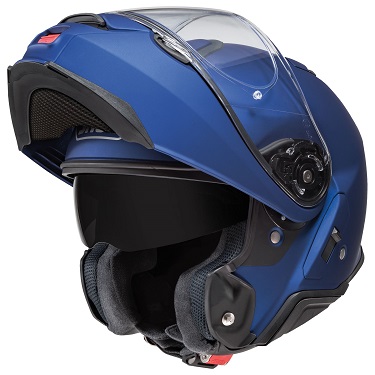
You might see the modular helmet called a “hybrid” because it’s a mix between a full-face and open-face helmet. It has full-face coverage, but the hard chin bar lifts up along with the eye shield.
This is as close to the best of both worlds as you’ll get. The modular helmet provides protection for your whole head while still allowing you to talk or eat without taking it off. They’re also easier to put on if you wear glasses.
Of course, there’s always a catch. Modular helmets are the most advanced type and, therefore, the most expensive.
Read more about modular vs. full-face helmets.
Pros:
- Full-face protection including chin bar
- Removable/liftable chin bar lets you eat or drink
- Easy to put on with glasses – see best helmets for glasses
Cons:
- Expensive
Read our guide to the best modular motorcycle helmet
Half Face
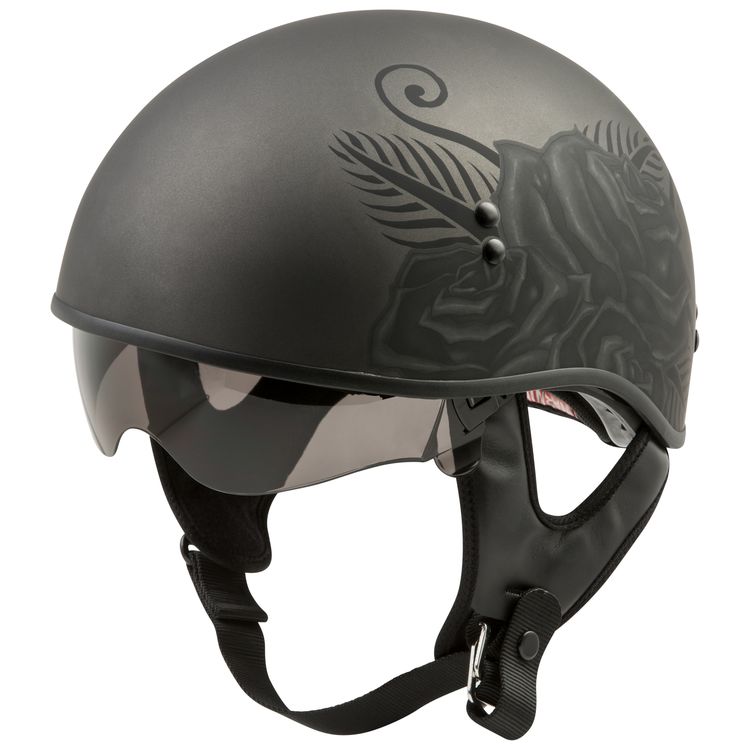
Nicknamed “shorty,” the half-face helmet is basically a bowl that goes over the top of your head, secured by a chin strap. It provides some protection for the top of the skull but little else. In many jurisdictions, these helmets provide the absolute bare minimum protection required by law.
Many old-school bikers like half-face helmets, not just for the wind on their faces but also for the style. They’re often designed to look like old racing or military helmets. Additionally, they have no eye shield, leaving eye protection totally up to the style preferences of the rider.
Pros:
- Antique style
- Flexibility, especially with eye protection
- Max wind on your face
Cons:
- Very little protection
- No eye shield
Read our guide to the best half-face motorcycle helmet
Motocross/Off-Road
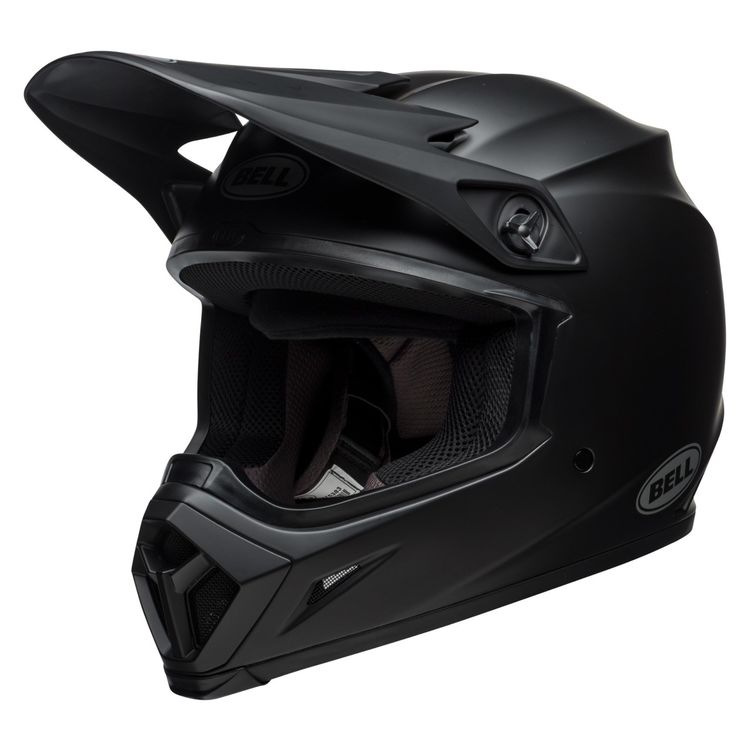
Motocross helmets resemble full-face helmets in that they have a chin bar and wrap around your entire head. However, the chin bar usually juts out along with a large visor on the forehead. This provides maximum protection while allowing for air flow, both to cool the rider and stay aerodynamic while racing.
Keep in mind that these helmets have no eye protection. Off-road athletes usually wear separate goggles.
This type of helmet is designed specifically for the sport of motocross and isn’t ideal for other kinds of riding like commuting, cruising, or touring.
Pros:
- Full-face protection, including extended chin bar and visor
- Aerodynamic
- Ventilation to keep cool
Cons:
- No eye protection
- Specific to motocross
- Less comfortable for long periods
Adventure\Dual Sport
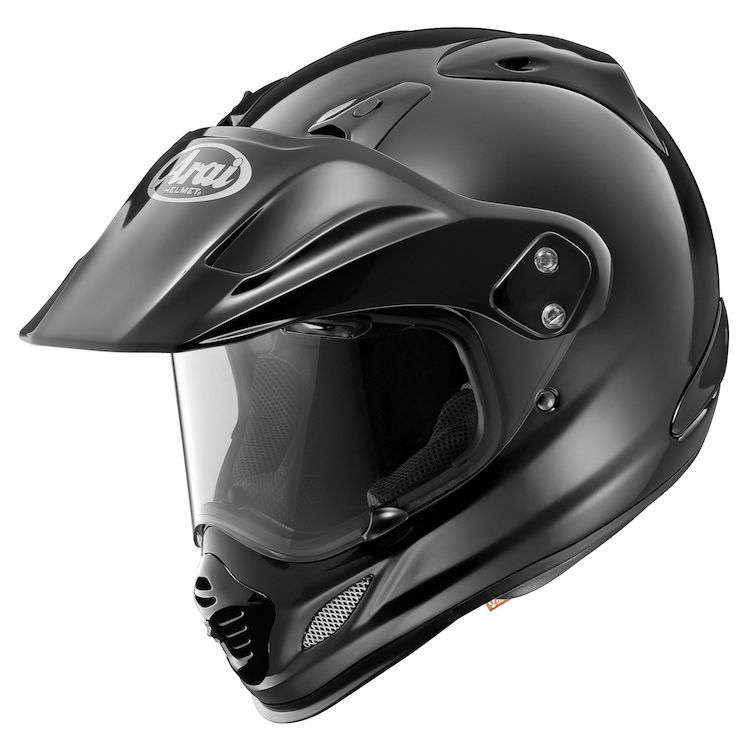
A dual sport helmet is essentially a full-face helmet combined with a motocross helmet. It has an angular, extended chin bar and visor, though usually not as extreme as in a true motocross helmet. Unlike a motocross helmet, it has an eye shield that can usually snap up to allow the use of goggles, too.
Most significantly, dual sport helmets have more padding, and their shape is more comfortable, allowing use for longer periods. As a result, you can use them for both off-roading and everyday use like commuting.
Read more about our picks for the best dual sport helmets.
Pros:
- Useful for both motocross and everyday riding
- Full-face protection, including chin bar
- Eye shield that snaps up
Cons:
- Can still be less comfortable for touring/cruising